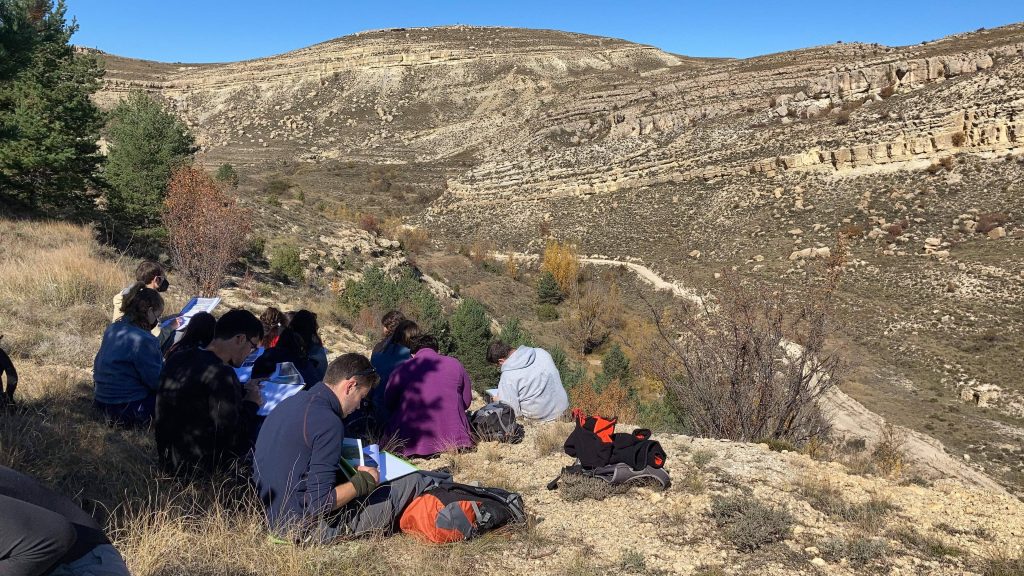(Zaragoza. Monday, October 2, 2023). The week of October 9 to 15, the city of Albarracín will host twenty-four students pursuing their doctorate in Geology. These doctoral students will attend the ninth edition of the International School of Sedimentology, an activity sponsored and subsidized by the International Association of Sedimentologists. To select these young researchers from the numerous requests received, aspects such as their work topic and their motivation, also ensuring broad international representation. Doctoral students from Asia (China, India, Pakistan, Turkey), America (Argentina, Brazil, Colombia, United States) and Europe (Spain, France, Holland, Italy, Poland, United Kingdom, Serbia) will come to the event. The course is organized by Beatriz Bádenas and Marcos Aurell, professors in the Department of Earth Sciences at the University of Zaragoza and members of the Aragosaurus-IUCA Group. It will also have the collaboration of Miquel Poyatos and Telm Bover, professors at the University of Barcelona. The central core of the course is work in the field in areas of the Sierra de Albarracín and the Maestrazgo of Teruel, visiting sites of importance in Sedimentology, recognized internationally.

Sedimentology is responsible for understanding the origin of sedimentary rocks. It is about reconstructing the environment in which the sediment accumulated that, after being buried and consolidated, gave rise to one or another type of rock. In the last edition of the course, the attending doctoral students studied the current sedimentation process in the shallow seabed of the Eleuthera island of the Bahamas. Now it’s time to visit and understand the rock that originates in a similar environment. We will study the most relevant aspects of limestone rocks around Frías de Albarracín, Moscardón and Jabaloyas, rocks that in their day (at the end of the Jurassic, 150 million years ago) were coral reefs, or formed broad banks of white sand on the seabed. shallow areas agitated by currents and waves. They are rocks of notable scientific interest, but also heritage, such as the case of the Jabaloyas reefs, which are part of the catalog of Places of Geological Interest (LIGs) of Aragon. In addition, rocks that originated around the coastline in Aguilar del Alfambra and Galve about 145 million years ago will be examined, as well as rocks of marine origin close to Miravete de la Sierra, but formed in the middle part of the Cretaceous, ago. about 120 million years.

The field observations will be complemented in the afternoon with practical exercises and presentations by the doctoral students of the progress of their research work, which will be carried out at the facilities of the Santa María de Albarracín Foundation. With all this, the International School of Sedimentology wants to provide the opportunity to interact between doctoral students and professors, combining field observations with practical activities.

